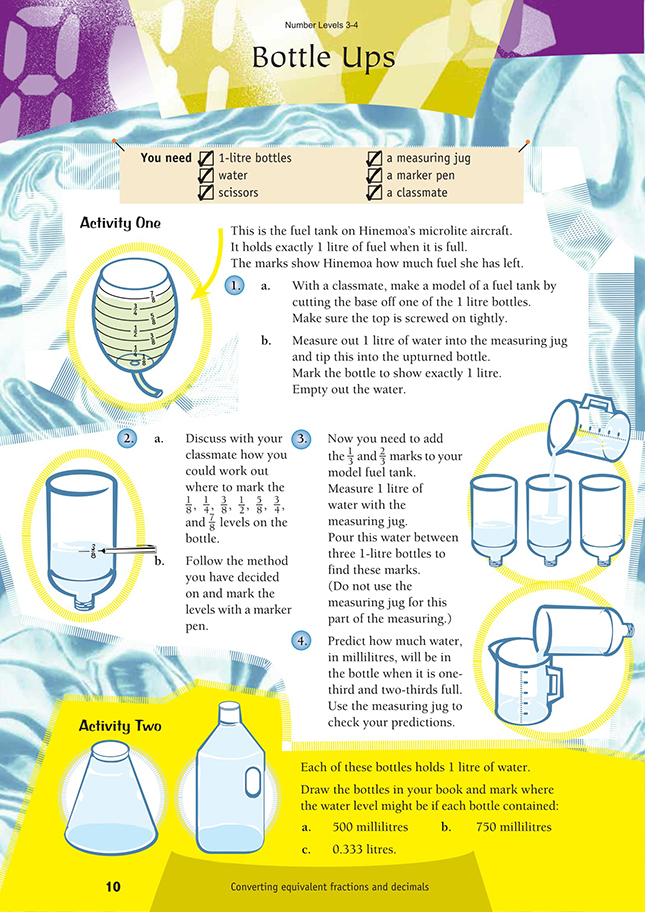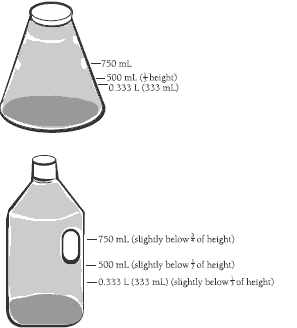This is a level 4 number activity from the Figure It Out series. It relates to Stage 7 of the Number Framework.
A PDF of the student activity is included.
Click on the image to enlarge it. Click again to close. Download PDF (331 KB)
find fractions of a litre
convert fractions to decimals
1 litre bottles, a measuring jug, scissors, marker pen, water
FIO, Level 3-4, Number, Book 1, Bottle Ups, page 10
A classmate
Activity One
The students can use their measuring jug or cylinder to measure out the amounts for the marks on their bottle in question 2. Dividing the height into eighths will not work because it does not allow for the varying diameter of the bottle.
The measuring jugs are more likely to be marked in millilitres than in eighths, so the students will need to calculate how many millilitres there are in 1/8 of a litre, 1/4 of a litre, and so on. Allow them to investigate various ways of marking their bottles. The easiest way is to fill the measuring jug to the required level (for example, 1/8 of a litre or 125 millilitres), pour this into the bottle, and mark the level. (Note: The symbol for litre is L and that for millilitres is mL.)
In question 3, the students divide 1 litre of water evenly between three 1 litre bottles to find the 1/3 and 2/3 marks. They need to measure out 1 litre because if they just fill the bottle up, it will be more than a litre. The three bottles need to be the same shape. Make sure they do not use the measuring jug for this part. Measuring between three bottles will help them realise that 1/3 + 1/3 = 2/3.
When they predict what 1/3 of a litre is in millilitres, they will probably realise that 1 litre, or 1 000 millilitres, doesn’t divide evenly into three, so the answer will not be a whole number. (The difference is very small.)
Activity Two
In this activity, students need to take into account the way the shape of the bottle affects the water level. For example, 500 millilitres in the bottle on the left will be less than halfway up the bottle because the bottle is much wider at the bottom than the top. Those students who are having difficulty in visualising could experiment by putting the same amount of water into different-shaped bottles and comparing the water levels. Encourage the students to use logic and reasoning to answer the question before they model it in a practical exercise. (This activity links with
investigations in Science.)
Answers to Activities
Activity One
1. Practical activity
2. a. Answers will vary, but the students will probably discuss how they could convert the fractions of 1 L into mL, measure these mL amounts of water in the measuring jug, pour the water into the inverted bottle, and then mark the levels.
b. Practical activity
3. Practical activity. You would mark your fuel tank by pouring in the contents of one of the bottles, marking the level as 1/3, and then pouring in the contents of one of the other bottles to find the 2/3 mark. (The third bottle is to help you separate the thirds.)
4. Predictions should be approximately 333 mL and 666 mL.
Activity Two
Practical activity. Answers may vary, but the levels should be similar to:

